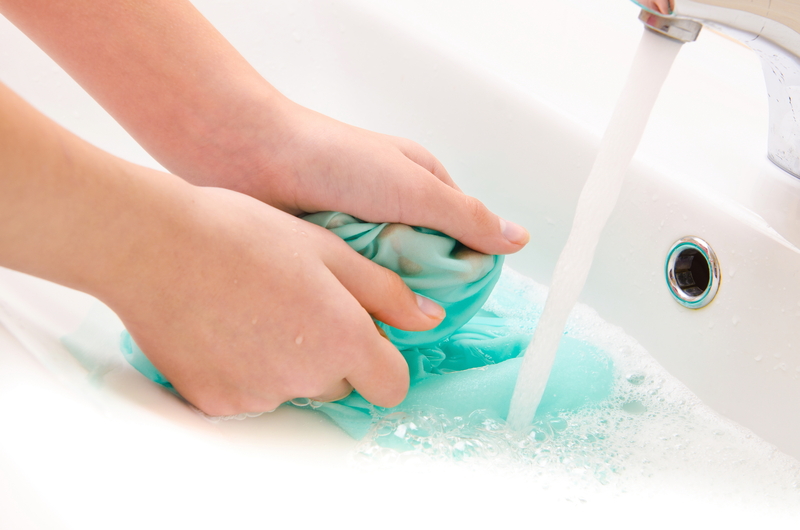Say Goodbye to Mould on Your Window Sills
Posted on 24/09/2025
Say Goodbye to Mould on Your Window Sills: The Ultimate Guide
Mould on window sills is more than just an unsightly nuisance. It poses a risk to your home's air quality, damages surfaces, and can trigger allergies and respiratory problems. In this comprehensive guide, we'll walk you through everything you need to know about eliminating mould from your window sills, preventing future growth, and maintaining a healthier, mould-free living environment.

Understanding Mould: What Causes It on Window Sills?
Mould is a type of fungus that thrives in damp, warm, and poorly ventilated environments. Our windows--especially during colder months--are prime spots for condensation to gather, creating the ideal breeding ground for mould. The issue is so common that window sill mould removal and prevention should be a part of every homeowner's regular cleaning routine.
Common Causes of Mould Growth on Window Sills
- Excess Moisture: High humidity, cooking, or bathing can increase moisture indoors.
- Poor Ventilation: Stagnant air around windowsills traps condensation.
- Temperature Differences: Cold window panes attract warm, moist indoor air, leading to condensation and ultimately, mould.
- Faulty Seals or Leaks: Water intrusion from outside through worn window seals or frames.
Why Should You Remove Mould from Your Window Sills Promptly?
- Health Risks: Mould can cause breathing problems, allergy symptoms, eye irritation, and even exacerbate asthma. Black mould, or Stachybotrys chartarum, is especially hazardous.
- Structural Damage: Mould eats away at paint, wood, and caulking, leading to costly repairs.
- Aesthetics: Dark or greenish stains ruin the appearance of your home.
How to Remove Mould from Window Sills Effectively
Getting rid of window sill mould isn't complicated, but it does require the right approach and safety precautions. Always use protective gear such as gloves and a mask, and ensure the area is well-ventilated.
Step-by-Step Guide to Cleaning Mould from Window Sills
-
Prepare Your Supplies:
- Disposable gloves and masks
- Papers towels or microfiber cloths
- Spray bottle
- Mild detergent or white vinegar
- Soft brush or toothbrush
- Baking soda (optional for stubborn stains)
- Disposable bag (to discard mouldy cloths)
- Ventilate the Area: Open windows and doors. This reduces inhalation risk and helps the area dry faster.
-
Apply Cleaning Solution: Mix equal parts water and white vinegar in a spray bottle. Spray the mouldy window sill liberally.
- For persistent mould, add a tablespoon of baking soda to the mixture for extra cleaning power.
- Scrub Gently: Using a soft brush, gently scrub the surface until mould patches disappear. Avoid aggressive scrubbing, which can damage the sill or spread spores.
- Wipe Clean: Use paper towels or a clean cloth to wipe away any residue. Immediately discard these in a sealed bag to prevent spreading spores.
- Dry the Area: Mould needs moisture to return, so thoroughly dry the window sill with a towel or hairdryer.
- Optional - Disinfect: For extra peace of mind, wipe the area with a diluted hydrogen peroxide solution (3:1 with water) to kill any lingering spores.
Eco-Friendly and Commercial Mould Cleaners
- Vinegar is a natural antifungal that kills around 80% of known mould species.
- Baking soda neutralizes odours and acts as a gentle abrasive.
- Hydrogen peroxide is effective and leaves no toxins behind.
- Commercial mould removers (look for eco-friendly options) can be used for severe infestations.
Always spot-test any cleaner on a small, inconspicuous area first, especially on wooden or painted window sills.
How to Prevent Mould from Returning to Your Window Sills
Cleaning is only half the battle--you must address the underlying causes to prevent mould on window sills from returning. Long-term mould control calls for good ventilation, moisture control, and regular maintenance.
Top Tips to Keep Window Sill Mould Away
- Improve Ventilation: Use extractor fans in kitchens and bathrooms, and open windows regularly to let fresh air circulate.
- Control Humidity: Aim for indoor humidity below 55%. Use dehumidifiers where needed, especially in winter or in older homes.
- Keep Window Sills Dry: Wipe away condensation from sills and glass each morning or after showers/cooking.
- Use Double-Glazed Windows: Modern windows reduce condensation drastically and keep sills drier.
- Check Seals and Frames: Make sure seals are intact and there are no leaks allowing moisture in from outside.
- Inspect Regularly: Look for the early signs of window sill black mould and act fast before it spreads.
- Apply Mould Resistant Paint: These paints contain fungicides and are ideal for window areas.
Frequently Asked Questions about Mould on Window Sills
Is Mould on Window Sills Dangerous?
While not all mould is toxic, some moulds release mycotoxins that can be harmful to your health, especially for infants, the elderly, and those with compromised immune systems. Even ordinary mould can cause irritation and worsen asthma or allergies.
Which is the Best Cleaner for Window Sill Mould?
Vinegar is widely recommended for eliminating mould naturally, but for stubborn or recurring mould, a hydrogen peroxide or a store-bought anti-mould spray may be more effective. Always rinse and dry the area thoroughly.
Can I Paint Over Mould?
No. Painting over mould will not kill it and only masks the underlying problem. The mould will eventually resurface and can cause the paint to peel or bubble. Always remove mould completely before painting and use a mould-resistant primer.
How Often Should I Clean My Window Sills?
Check your window sills at least once a month, especially during damp or cold seasons. Increase cleaning frequency if you've had previous outbreaks or live in a humid climate.
DIY Solutions vs. Professional Mould Removal
When to Call a Professional
- If you suspect toxic black mould or the infestation covers a large area (more than 1 square metre).
- When cleaning fails to remove all the mould, or it keeps returning quickly.
- For wooden window sills that have started to rot due to long-term moisture and mould exposure.
- When you experience health symptoms that may be linked to mould exposure.
Professionals have access to industrial-grade cleaning solutions and can help identify the root moisture problem for long-term results.
DIY is Suitable When:
- The affected area is small and well-contained.
- You can ventilate the area and clean safely using gloves and a mask.
- No one in the home has severe respiratory issues or immune system vulnerabilities.
Mould on Different Types of Window Sills
Wooden Window Sills
- More prone to mould due to their porous nature.
- Use minimal moisture when cleaning to avoid warping.
- Consider sanding and repainting with mould-resistant paint after cleaning.
Plastic or UPVC Window Sills
- Easier to clean and less likely to absorb moisture.
- Use non-abrasive cleaning tools to prevent scratching the surface.
Stone or Tile Window Sills
- Generally resistant to mould, but grout lines are vulnerable.
- Scrub gently with vinegar and monitor for regrowth in joints.

Accelerating Window Sill Drying: Quick Tips
- Point a fan at damp window sills after cleaning or during wet weather.
- Install moisture-absorbing packets or silica gel near problem spots.
- Consider keeping curtains/blinds open during the day to allow sunlight to naturally inhibit mould growth.
Conclusion: Enjoy Healthier, Mould-Free Window Sills
Now that you know how to eliminate and prevent mould on window sills, you can enjoy a cleaner, healthier home free from unpleasant odours and potential health problems.
*Remember*: Regular cleaning, good ventilation, and prompt repairs are the keys to saying goodbye to mould on your window sills for good.
Key Takeaways
- Mould thrives on moist, poorly ventilated window sills--address both to defeat it forever.
- Natural cleaners like vinegar, baking soda, and hydrogen peroxide are safe and effective solutions.
- Prevent future outbreaks by tackling condensation immediately and inspecting window seals regularly.
- When in doubt or facing a severe infestation, don't hesitate to seek professional help.
Say goodbye to window sill mould today and enjoy peace of mind in your fresh, healthy living space.




